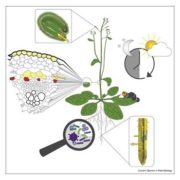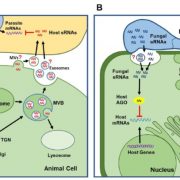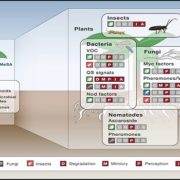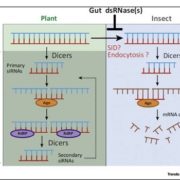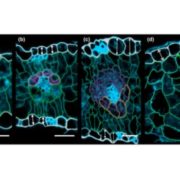A root hair-seeking endophytic microbe from an unusual volcanic swamp corn enhances phosphate uptake
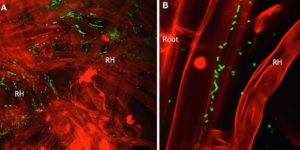 In plants the location of microbes to specific cell types, including endophytes, is still scarcely described in contrast with the situation in the animal kingdom. Shehata et al. describe a bacterial endophyte (Strain 3F11, possibly Enterobacter asburiae) from Zea nicaraguensis, a wild corn growing at a Nicaraguan swamp located above rock phosphorus (P) lava flowing from a nearby volcano. This P is insoluble and therefore extremely difficult to be absorbed by plants. Endophytic bacteria 3F11 helps this particular wild corn by promoting P absorption and subsequent plant growth. It does this by helping with phosphate solubilation though colonization of specific root hair cells and acidification of the soil in the said environment. Given the endangered species status of Zea nicaraguensis, this plant species and probably others may benefit from being conserved together with their associated microbia. (Summary by Isabel Mendoza) Sci Reports 10.1038/s41598-017-14080-x
In plants the location of microbes to specific cell types, including endophytes, is still scarcely described in contrast with the situation in the animal kingdom. Shehata et al. describe a bacterial endophyte (Strain 3F11, possibly Enterobacter asburiae) from Zea nicaraguensis, a wild corn growing at a Nicaraguan swamp located above rock phosphorus (P) lava flowing from a nearby volcano. This P is insoluble and therefore extremely difficult to be absorbed by plants. Endophytic bacteria 3F11 helps this particular wild corn by promoting P absorption and subsequent plant growth. It does this by helping with phosphate solubilation though colonization of specific root hair cells and acidification of the soil in the said environment. Given the endangered species status of Zea nicaraguensis, this plant species and probably others may benefit from being conserved together with their associated microbia. (Summary by Isabel Mendoza) Sci Reports 10.1038/s41598-017-14080-x


